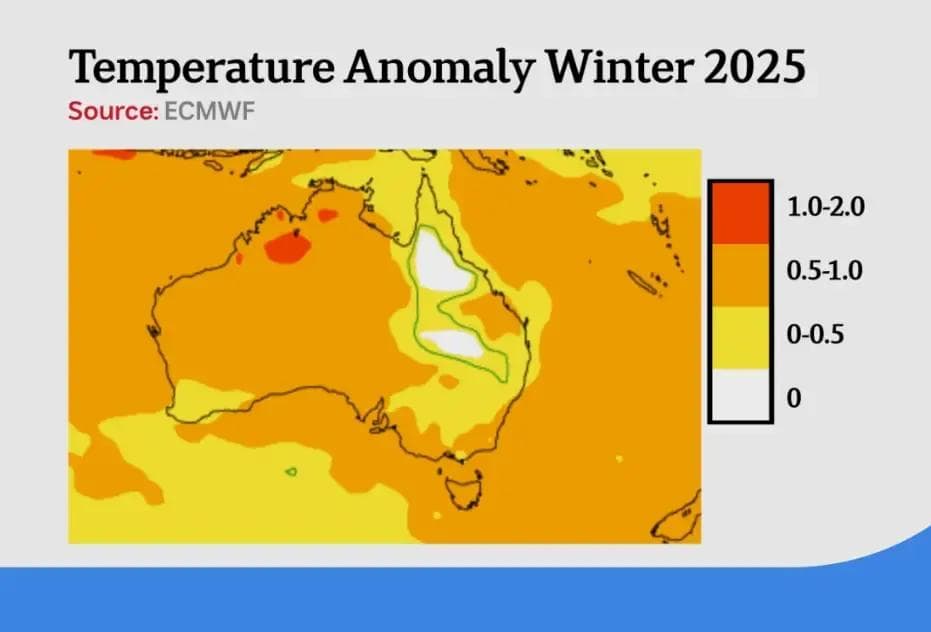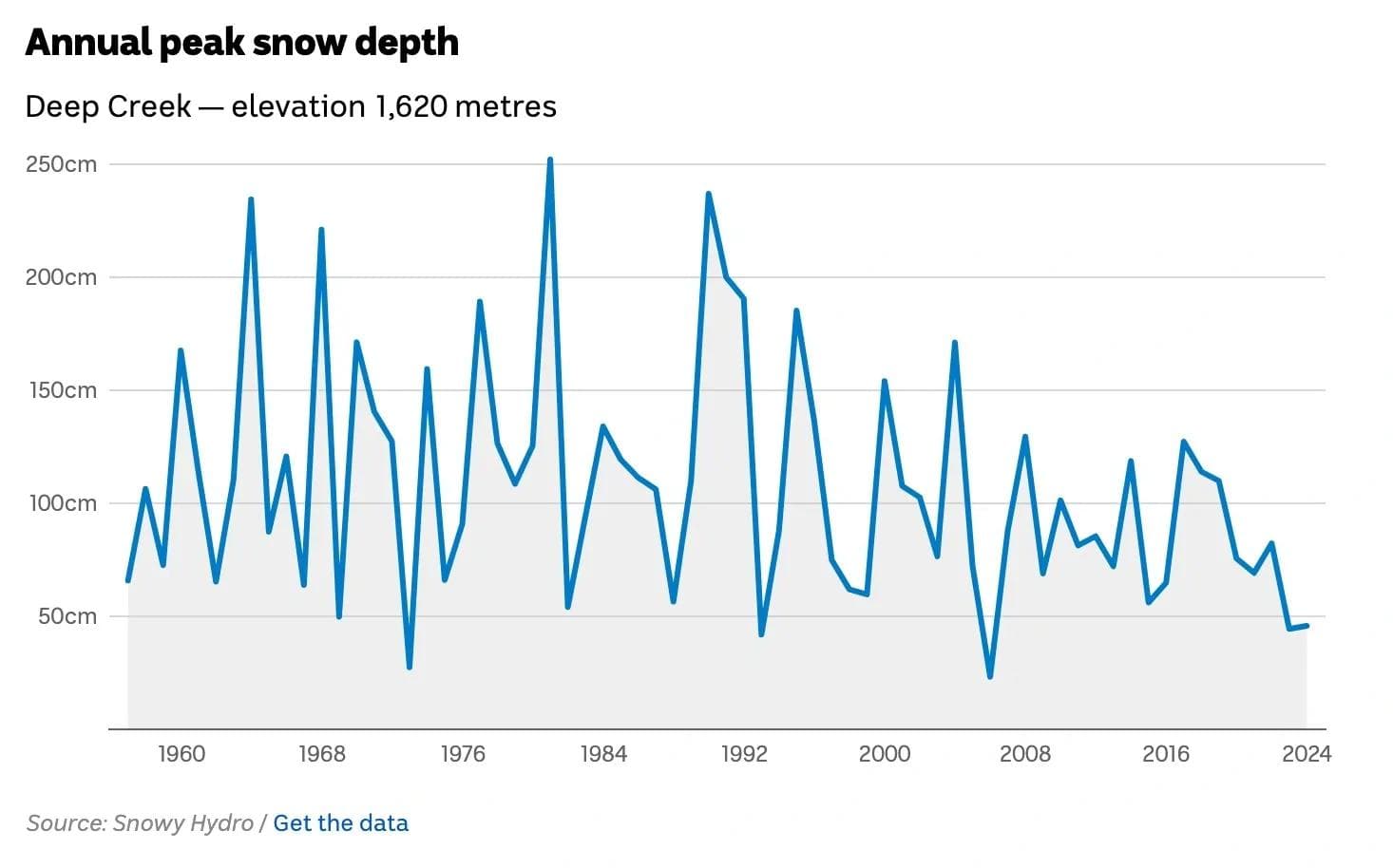
Warm Winter Forecast Threatens Australian Ski Season...Again
Published Date:
Australia is forecast for another warm winter which will threaten the snow season.
The Bureau of Meteorology (BOM) has released its seasonal outlook, forecasting one of Australia's warmest winters on record. This prediction comes after two consecutive years of above-average temperatures, raising concerns about the impact on the upcoming ski season. Since August last year, Australia has experienced mean temperatures 2.1°C above the 1961-1990 baseline average, equivalent to about 2.5°C above pre-industrial levels.

The BOM's model indicates that mean temperatures across Australia could be approximately 1.5°C above the 1961-1990 baseline this winter. If realised, this would rank among the top three warmest winters on record, following the anomalies of +1.54°C in 2023 and +1.49°C in 2024. The European Centre for Medium-Range Weather Forecasts (ECMWF) supports this outlook, predicting temperatures 0.5°C to 1°C above the 1993-2016 average for about two-thirds of the country.
These warm conditions pose a significant challenge for Australian ski resorts. For every 1°C increase in temperature, the snowline rises by 100 to 150 metres. Unlike higher alpine regions globally, Australia's modest mountains and latitude result in marginal below-freezing temperatures even on the coldest days. This makes the country's ski areas particularly vulnerable to warming trends.

The past two seasons have been particularly difficult for Australian ski resorts due to the unprecedented heat. Lower elevation resorts struggled to maintain snow cover for extended periods. While the amount of snowfall is crucial, equally important is the temperature between snowfalls, which affects how quickly the snow melts.
Despite the warm forecast, there's still uncertainty regarding precipitation. The BOM indicates a near 50% chance of above or below median rainfall across most of Australia. This leaves open the possibility of a reasonable snow season if cold snaps coincide with precipitation events.
The primary factor contributing to the ongoing warmth is the state of ocean temperatures surrounding Australia. Waters off every coastline remain significantly warmer than normal, with the highest anomalies of up to 3°C observed off the west coast. These warm ocean conditions are expected to persist until at least mid-spring, continuing to influence air temperatures over land.



